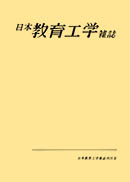Volume 22, Issue 1
Displaying 1-13 of 13 articles from this issue
- |<
- <
- 1
- >
- >|
-
Article type: Cover
1998Volume 22Issue 1 Pages Cover1-
Published: June 20, 1998
Released on J-STAGE: October 20, 2017
Download PDF (27K) -
Article type: Cover
1998Volume 22Issue 1 Pages Cover2-
Published: June 20, 1998
Released on J-STAGE: October 20, 2017
Download PDF (27K) -
Article type: Appendix
1998Volume 22Issue 1 Pages App1-
Published: June 20, 1998
Released on J-STAGE: October 20, 2017
Download PDF (59K) -
Article type: Appendix
1998Volume 22Issue 1 Pages App2-
Published: June 20, 1998
Released on J-STAGE: October 20, 2017
Download PDF (59K) -
1998Volume 22Issue 1 Pages 1-12
Published: June 20, 1998
Released on J-STAGE: May 17, 2025
Download PDF (2150K) -
1998Volume 22Issue 1 Pages 13-27
Published: June 20, 1998
Released on J-STAGE: May 17, 2025
Download PDF (3194K) -
Article type: Article
1998Volume 22Issue 1 Pages 29-42
Published: June 20, 1998
Released on J-STAGE: October 20, 2017
Download PDF (1497K) -
Article type: Article
1998Volume 22Issue 1 Pages 43-55
Published: June 20, 1998
Released on J-STAGE: October 20, 2017
Download PDF (1536K) -
Article type: Article
1998Volume 22Issue 1 Pages 57-69
Published: June 20, 1998
Released on J-STAGE: October 20, 2017
Download PDF (1665K) -
Article type: Appendix
1998Volume 22Issue 1 Pages App3-
Published: June 20, 1998
Released on J-STAGE: October 20, 2017
Download PDF (19K) -
Article type: Appendix
1998Volume 22Issue 1 Pages App4-
Published: June 20, 1998
Released on J-STAGE: October 20, 2017
Download PDF (98K) -
Article type: Cover
1998Volume 22Issue 1 Pages Cover3-
Published: June 20, 1998
Released on J-STAGE: October 20, 2017
Download PDF (30K) -
Article type: Cover
1998Volume 22Issue 1 Pages Cover4-
Published: June 20, 1998
Released on J-STAGE: October 20, 2017
Download PDF (30K)
- |<
- <
- 1
- >
- >|
